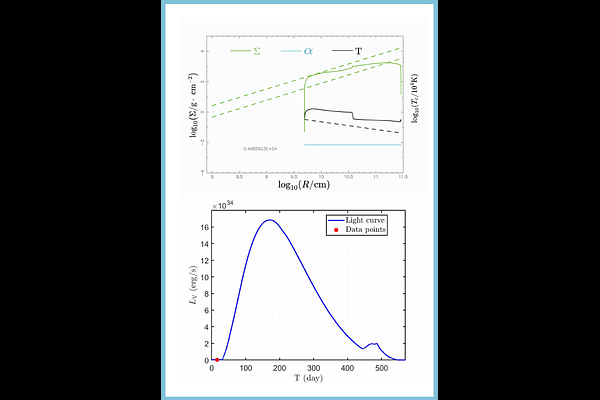A Comprehensive study of time delay between optical/near-infrared and X-ray emissions in black hole X-ray binaries

A Comprehensive study of time delay between optical/near-infrared and X-ray emissions in black hole X-ray binaries
Dizhan Du, Bei You, Zhen Yan, Xinwu Cao, Jean-Marie Hameury, Yue Wu
AbstractWe conducted a comprehensive study of daily delays using multi-wavelength data from a sample of well-studied black hole X-ray binaries, specifically focusing on the sources GX 339-4, 4U 1543-47, and XTE J1550-564. The Interpolated-Correlation Function method was employed to investigate the temporal relationship between the X-ray (Compton component) and optical-infrared (OIR) emissions. Our results show that during the rising hard state, the Compton emission consistently lags behind OIR emission for several days. In contrast, during the decaying hard state, the OIR emission lags behind the Compton emission by approximately 6 to 35 days. This measurement can potentially be used in models of accretion physics and disk instability. We explore the underlying mechanisms responsible for these time delays, highlighting the critical role of viscous heating in the accretion disk in generating OIR luminosity for these sources. The observed time delays during both the rising and decaying hard states are well explained by the disk instability model.